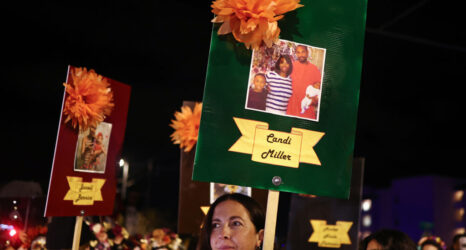Wonder Girls: Changing Our World is the first book to document the passionate and peaceful activism of girl-led groups from around the world—which are improving health, education, gender equality and the environment and stopping child marriage, domestic violence, child trafficking and war. The Ms. blog is running girls’ stories from the book all this week long in honor of International Day of the Girl. You can read them all here.
Brenda Jematia, 17, Kenya
Brenda Jematia lives in the Elburgon section of Molo. She, her mom, and three brothers only recently moved here. When Brenda promised Akili Dada to mobilize people in her community, she actually knew no one in Molo. Her solution: recruit an existing group.
She convinced 70 youth group members at St. Peter’s to construct a shed as a chicken coop in the churchyard. About 20 young people now watch proudly as Brenda gives me a tour.
The place smells like fresh-cut wood. The floor of the coop is suspiciously immaculate: nary a feather or dropping. The hens and roosters are silent. I suspect that Brenda and her team moved 16 chickens into the coop about the same time we drove up—just as Leah organized neighbors to populate her library; just as Hellen set up a Sack Garden especially for me to photograph. The Akili Dada girls’ initiative is impressive. Brenda’s project goals are ambitious: “Most of the youths in this club are between 15 and 21, free and idle. This project is to make them do things, generate income and become independent. The project will provide food, scholarships, and help reduce drug abuse and early pregnancy.” To me, this sounds like a magic bullet disguised as a chicken coop. I invite her to tell me more.
“We had a meeting. I said, ‘I want us to start a community project. Can we keep chickens?’ They said, ‘That is a good idea because it will not take a lot of space. At the same time, getting building materials will be easy. You look for timber, metal sheets, wire mesh, and you come up with a chicken house.’ In December, we started to build it, but didn’t finish. In April, most of the members were not here but we still continued building. This time around, we finished, and I told them, ‘We must get chickens and see our project moving on.’ We agreed that each member of our group would contribute one chicken.”
The roosters are starting to crow. I ask Brenda to describe her next steps. “You need fresh kale to feed the chickens and we have a patron with a farm that can provide that. You need water. Dry maize. Plus some commercial feed; each member will contribute 50 shillings (50 cents US) and we will choose a leader to buy feed.”
“This school break ends soon,” I note. “What do you expect will happen between September and your next break in December?”
“Some of our members have finished secondary school; they will come take care of the chickens. The hens will lay eggs and hatch more chickens; the coop can hold 60. I think these 16 chickens will be sold. Each should bring between 600 and 1,000 shillings ($6 to $10 USD).
“What will you do with the money?” I ask.
“We were thinking of planting a garden. Then we’d grow kale and sell it to raise money to feed the poor or sponsor a boy or girl from the local slum to go to school. Secondary school costs 7,000 shillings per year ($70 U.S.).
Brenda reflects on her experience running this project: “I am learning more that helps me cope with the problems. The most difficult part has been lack of cooperation from the members. Maybe even though you are doing right, some people condemn you. I just said to the others, ‘Let’s move on. When they see we are doing something great, they will come and even apologize.’ That has happened.”
Brenda’s project seems multi-layered and complex. I wonder, “How will you measure success?”
“After a few years, by seeing what we have achieved—and not achieved—from the start. How much money have we made, how many students we have sponsored, how many youth are doing income-generating work. Our project is moving along. It will be bigger next year. It is going to be something great.”
I ask what Brenda will be doing in ten years if all her dreams come true.
“I will be first woman Governor of the Central Bank of Kenya.” I salute her. “I hope that happens,” I say.
“It will,” she assures me. “Hard work will make me reach there. And belief in myself.”





